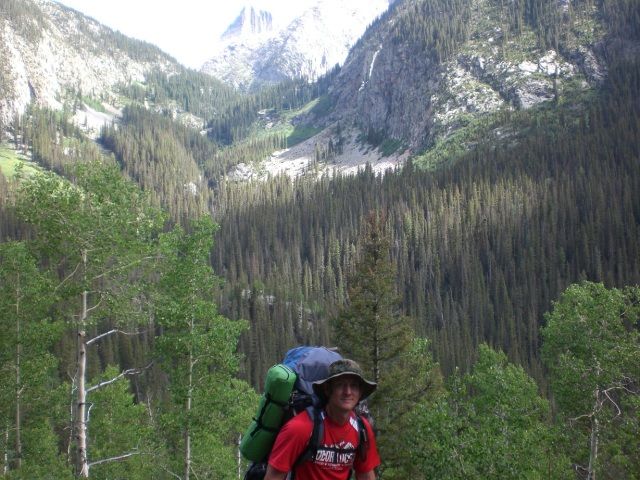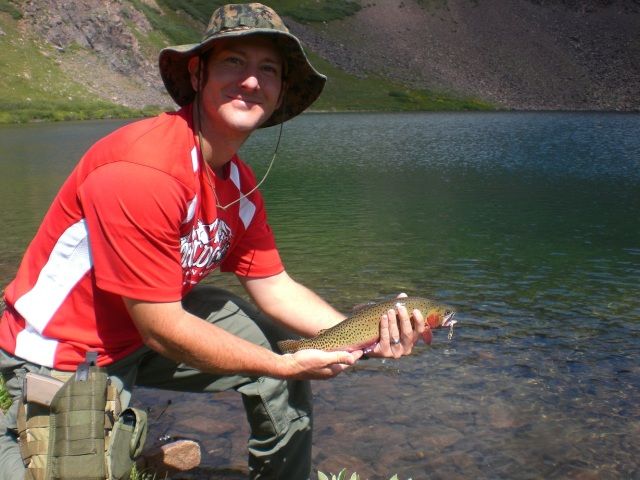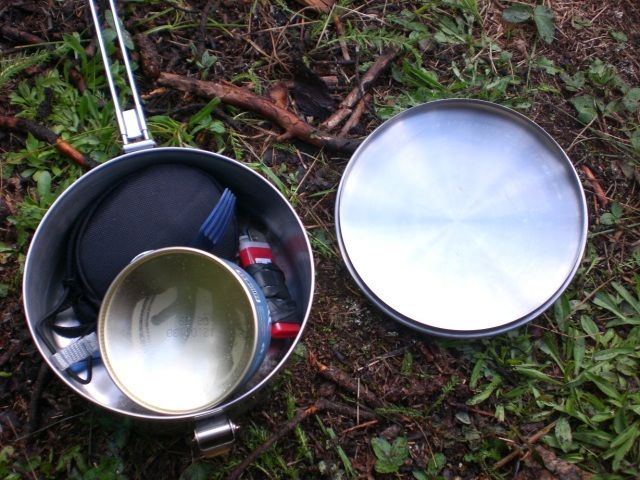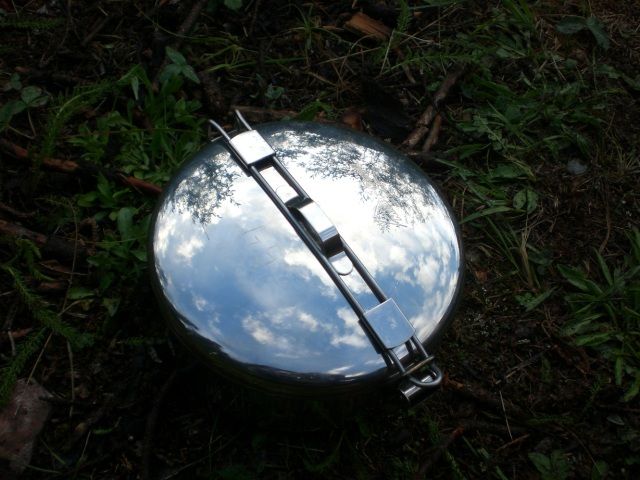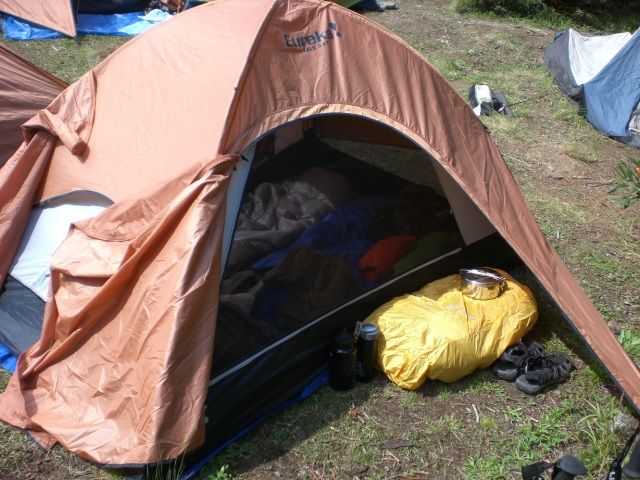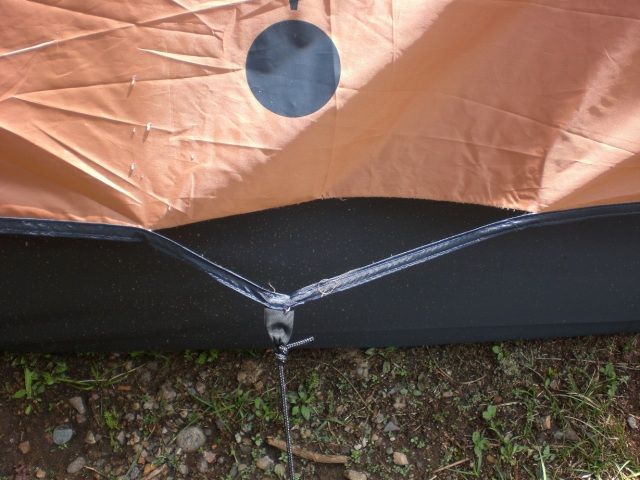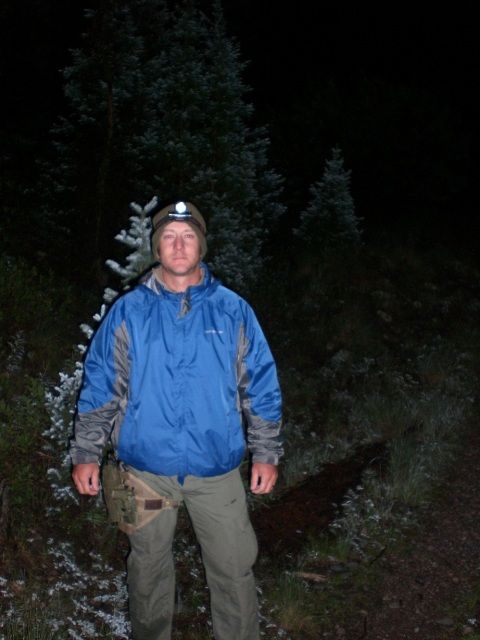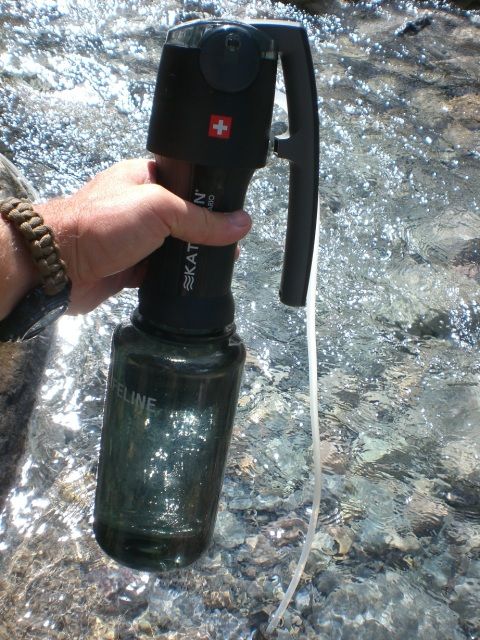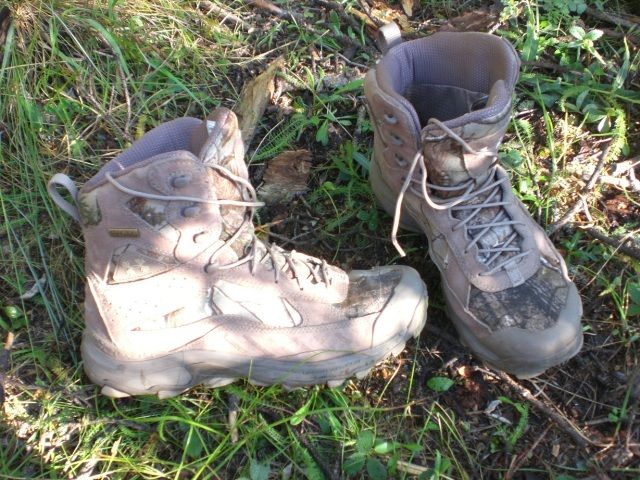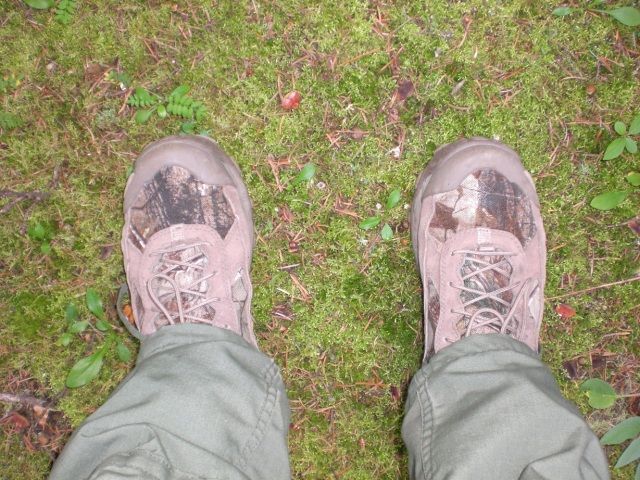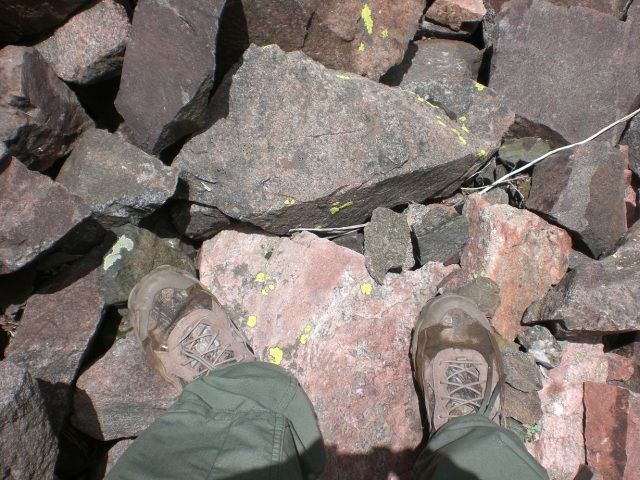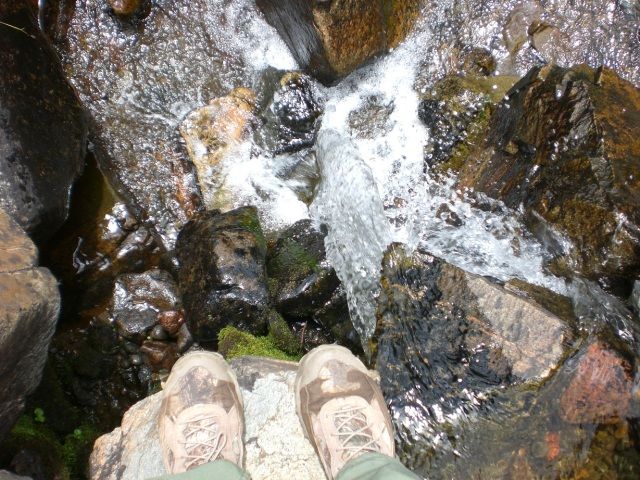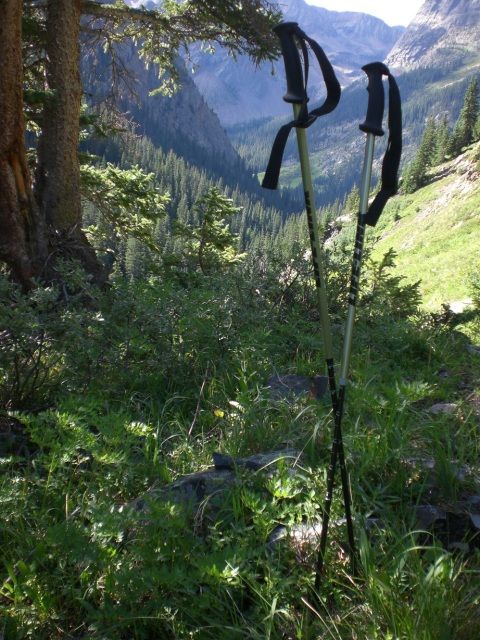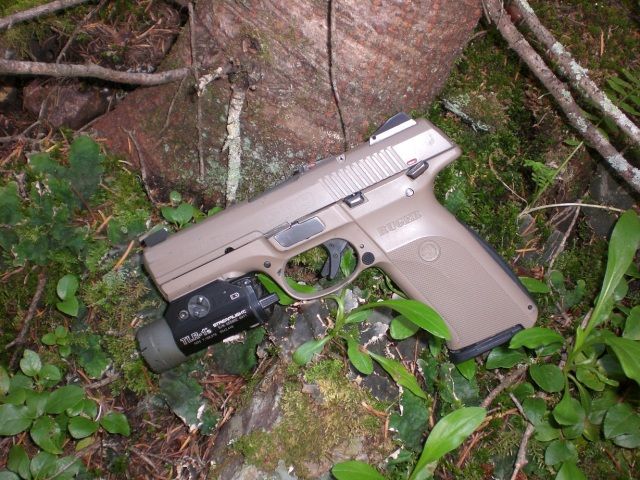I do quite a bit of backpacking - you could call it a passion, in fact. And every time I head out, whether it's into the desert, the rolling hills, or the high mountains, I always learn something new about myself and my gear. For this trip, I had recently purchased several pieces of new gear, and even though I field-tested them beforehand to make sure they wouldn't fail me, the rocky, high altitude, rain-every-day environment of the Grenadier Mountains really put them to the test. Here's the new gear that I used, and what I discovered about it.
Optimus Crux stove - More Info Here
Simply said, this is the greatest camping stove I have ever owned. In the past I have tried everything from the MSR Whisperlite, which burns hot but is too large and fragile, to the German military surplus Esbit stoves, which are lightweight, small, and easy to use but slow for cooking. The Crux, however, is the best of everything without the problems. It's small and lightweight, fits into a neoprene pocket that slips over the bottom of an isobutane can, and burns hot. I can boil 1 liter of water in just over 2 minutes, and a 100 gram can of fuel lasted me 5 days with 2 cooked meals a day. It's easy to use and so far is very durable - I've cooked over 25 meals on it at this point without a hiccup. As for packing it, I can fit the stove, a 100 gram can of fuel, utensils, lighter, and seasoning in my 1 liter MSR pot with room left over for drink mixes, small food packs, etc.
Eureka! Isis 2XT tent - More Info Here
I don't use tents when I can avoid it - normally I sleep on the ground or under a shelter of some kind. For my Colorado trip, however, I wanted to make sure I could keep all of my gear totally dry, since rain was forecast everyday. I didn't want to spend a bundle, since I don't see myself packing a 5lb tent around that much, so when one of the other guys I would be hiking with found and purchased the Isis 2XT, I just had to try one out for myself. The seams are already sealed, but to be safe I re-sealed all seams on the tent and fly, even over the factory seal. Whether it helped or not I don't know, but all of my gear and my tent mate's gear stayed bone dry all week.
The tent is roomy enough for 2 grown men to not feel cramped, and the vestibule is large enough that I kept my main pack and several other items outside all week during the daily rainstorms without them getting even a bit damp. The double entry side doors are perfect for keeping you from crawling over your buddy or your gear to get in or out, and the ventilation was sufficient enough that we didn't wake up with too much condensation. It packs up easily and tightly, and overall I was very happy with this tent. I made a few modifications to it, though.
First, I added a 1 foot length of 550 cord to the vestibule zipper so that you can actually reach it from inside the tent and not have to crawl halfway out just to open the flap. Second, I tossed out the flimsy tent stakes that the Isis comes with and replaced them with aluminum tent stakes, like the ones found here. It's an inexpensive fix to a major pain. The only gripe I have with the tent is that I ran guy line from the bottom of the front of the rain fly, and when one of the guys just lightly tripped on it, it ripped pretty significantly. It didn't rip any further though, even when I left it tied out, and it still got the job done. Some polyester thread and a little sewing once I got back to the home front and the fly was fixed easily enough.
Black Diamond Stow 'n' Go rain jacket
This was not technically the first time I have ever used this jacket, but it was the first time I have used it every day for a week. As usual, Black Diamond delivers a product that is completely effective. This is a lightweight jacket that kept me 100% dry, and the fold up hood, which stores very neatly in the collar, was a huge advantage during heavy downpours and hail. The most impressive part of this jacket for me is that a small swamp wasn't created inside of it when the rain stopped or the sun came out - there was plenty of ventilation and I never felt uncomfortable in the least. Once it's done being used, it stows inside its own pocket, and packs up small enough that I could put it in the cargo pocket of my pants. Here I am enjoying one of the rain storms that is literally freezing once it hits the ground.
Katadyn Vario water filter - More Info Here
Also not the first time I've used this piece of gear, but certainly the first time I've relied on it this heavily. There were a few different filters in camp, and thank goodness for that, as a few days in several of them started to go down. My Vario was the last one to break (the check valve in the head crapped out on the night before we left) while the two MSR MiniWorks EX filters were dead within a couple of days, not sure what happened with those. The only filter left standing at the end of the week was the MSR HyperFlow, which was the slowest and made you look like a fool every time you used it. In the past, my Vario has worked flawlessly, and the filter was far from the end of its life. It easily pumps 2 liters a minute, and for the first few days it did just that. When it started slowing down, I pulled it apart and cleaned it, even changed some o-rings, but to no avail. Once I got home I called Katadyn and they sent me a new head assembly stating that the check valve was most likely broken. We'll see what the future holds for this filter - before the Colorado trip I had full confidence in it, but now I'm not so sure.
Motorola P893 Battery Charger - More Info Here
I bought this item specifically for this trip, but ended up not even getting any cell service all week, so I didn't really need this until the last day when we were waiting for the train to pick us up. I ran the battery on my phone all the way down on purpose, and then hooked this charger up to it while we waited. It's supposed to hold enough juice for 1 to 1 1/2 full phone charges, but what I found what that it held enough for 1 charge of about 75%, and that took a couple of hours to accomplish. I'll continue to use it as an emergency power source, but it defininitely does not perform as advertised. I've tried it several times since then with similar results, and after contacting Verizon and Motorola about it, they say I may have a defective unit. I peronsally think that they are just over-estimating this unit's capability.
Under Armour Speed Freek boots - More Info Here
There are few things more important to an outdoorsman that his footwear, and cheap boots will almost always let you down. This is a lesson that I have learned the hard way and don't want to ever learn again. That being said, I have tried just about every boot out there, including Danner, Merrell (my wife loves her Merrells), Salomon, Keen, Bates, and Asolo. The only one that can stand up to the use and abuse that I put my boots through are the Asolos (the Fugitive GTX, to be exact) and I fully intended to buy another pair since I just blew through my last pair. But then someone recommended the Under Armour Speed Freeks, and though I was a little hesitant at putting my trust in a brand of footwear that was largely untested, I decided to give it a try, and so far, so good. These are the lightest boots I have every worn, and they are fully waterproof (Gore-Tex). The tread is aggressive and saved me more than a couple of when I was free climbing up the face of a peak near our camp on day 2. The sole is puncture proof (so they say) and the lining inside is moisture wicking. My only complaint is that with no insulation (I usually prefer a 200gram Thinsulate lining), they do get a little chilly when the temperature drops, even with the right socks.
As you can see below, my Speed Freeks have already been in several different environments and they have performed very well.
Life-Link Trekking poles - More Info Here
I have used my trekking poles before, but not like this. On this trip, these poles literally saved me - and my knees and my feet. With the kind of hiking we did at some of the angles we were on, it would have really been tough to not have poles, as a couple of the guys who went can attest to. Life-Link poles are designed to not fail, even under extreme stress, so I had confidence that my poles wouldn't break when I needed them most. There were a few poles from other brands that did fail on this trip, which made me glad to have the same poles issued to US Navy SEALs. The only thing I would have changed is to put the small baskets on instead of the large baskets, as the large baskets got jammed in rocky areas a few times. I had expected more muddy conditions, which the large baskets did help with, but the smaller ones would have been easier to maneuver with.
Handgun and Holster - More Info Here and Here
As always, my handgun goes where I go, and backpacking is no exception. While this setup is far from a new piece of gear, I feel that it deserves mention since it always performs so well. My Ruger SR9 is my primary carry gun as well as my primary instructor handgun, and it's seen over 10k rounds with no issues or hiccups. It gets used and abused in all environments and conditions and has yet to fail me - even the freezing rain of the Colorado mountains couldn't stop it. When I go backpacking, I like to mount a Streamlight TLR-1s light on my handgun, which turns it into a very solid defensive platform. I also use a thigh rig to keep the handgun out of the way of kidney pads but still easily accessible. For this setup I use an HSGI MOLLE platform with an Eagle universal light holster, and a USGI mag pouch. Yes, those are zip ties. No, they don't bother me.
In addition to the gear mentioned above, my sleep system, my pack, and several other pieces of tried-and-true equipment all performed as expected - they have seen enough miles and grueling days to have my full faith and confidence. As usual, this trip taught me more about how far my gear can go as well as my own ability to push my body to its limits. Hiking at elevation levels up to 14k can be tough, but the experiences you have there are always worth it.
Stay Aware, Stay
Safe, Train Hard.
-Glen Stilson

